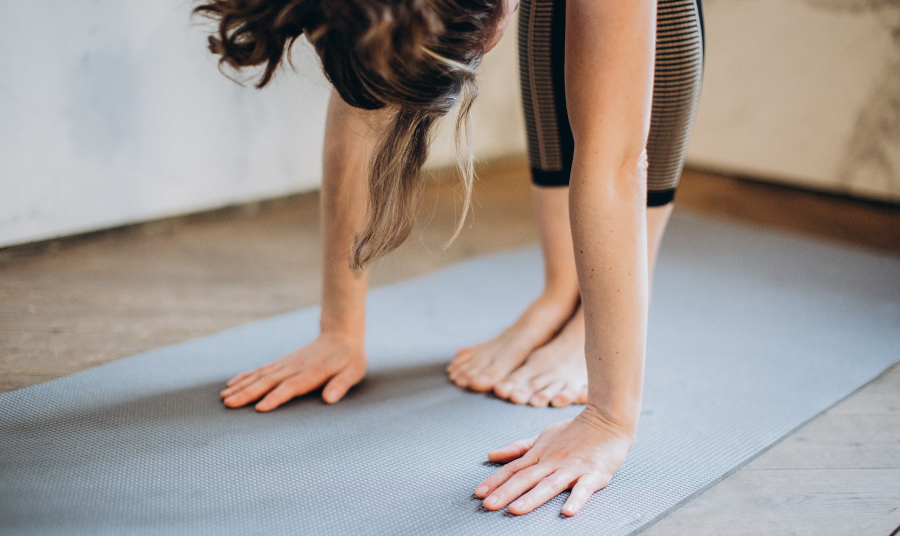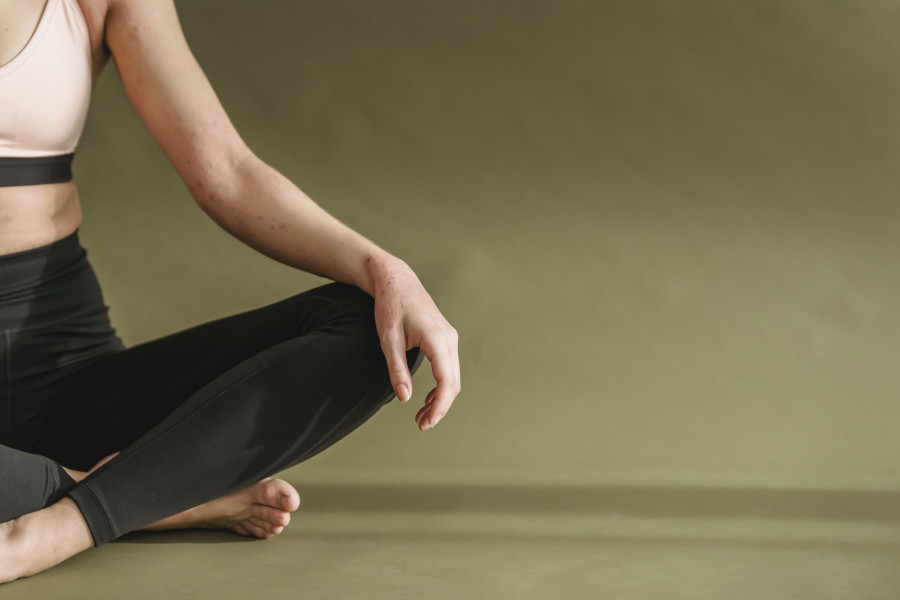If you're new to yoga, it can be overwhelming to know where to start with yoga for beginners. The good news is that getting the basics right will set you up for a successful yoga practice while avoiding injury. This post covers the proper way to place your hands and feet, how to protect your knees, neck, wrists, and lower back and where to find some great online resources for further guidance. Let's dive in and lay the foundation for your yoga journey!
1. Proper Hand Placement
Your hands play an important role in many yoga poses. It's essential to place them correctly to avoid putting too much strain on your wrists or shoulders. In most poses, your hands should be shoulder-width apart and firmly grounded, with your fingers spread wide. Your palms should be flat and evenly pressed into the mat. The only parts of your hand that can raise from the mat is the center of your palm and your knuckles, by slightly gripping the mat with your finger tips (you’ll see the tips of your fingernails turning slightly white when you do it).
This blog post by Lana Reed describes exactly how I’ve been taught to place my hands and includes some great images that show what your hands should be doing: ‘Let’s talk about hand placement in yoga poses…’.

2. Proper Foot Placement
Just like with your hands, your feet also need to be placed correctly. Proper foot placement can help you maintain balance and avoid injuries. In standing poses, your feet should be hip-width apart, with your toes pointing forward and you can even spread them apart a little. Your weight should be evenly distributed across your feet, and your arches should be lifted. This post by doyou.com gives 3 great tips for proper foot alignment in yoga.
3. Protect Your Lower Back
The lower back is a common area for injuries in yoga. To avoid straining your lower back, it's important to maintain a neutral spine (no arching or bending) and engage your core muscles (e.g. try to tighten all your abdominal muscles from your stomach down to your hips, including the muscles in your lower back). In seated poses, make sure to sit on a folded blanket or cushion to elevate your hips and protect your lower back. Additionally, props like blocks can be used to modify poses and provide support, allowing you to maintain proper alignment without compromising your lower back.
Tight hips can contribute to lower back pain. Incorporate hip-opening exercises and stretches into your yoga routine to improve flexibility and reduce strain on your lower back. Poses such as Pigeon Pose, Butterfly Pose, and Low Lunge can help release tension in the hips, indirectly relieving pressure from the lower back.
Always pay attention to your body's signals during your yoga practice. If you feel any pain or discomfort in your lower back, modify the pose or come out of it altogether. Remember, yoga is not about forcing yourself into positions but finding a balance between challenge and comfort. This post from Harvard Health publishing has some good tips on how to protect your back: ‘The safe way to do yoga for back pain’.
4. Watch Your Neck Placement
In many yoga poses, it's easy to let your head droop forward or to one side, putting strain on your neck. To avoid this, keep your neck in line with your spine and pay attention to the alignment of your head and neck in each pose. In poses where you're looking up, like Warrior I, make sure to lengthen your neck and keep your gaze forward, rather than tilting your head back. As I’ve already said, and it can’t be emphasized enough, pay close attention to your body and sensations during your practice. Listen to any discomfort or strain in your neck and adjust accordingly.
This article by shutupandyoga.com is an excellent overview of how to avoid neck strain in yoga: ‘The Most Common Yoga Injuries and how you can Avoid Them. Part V: Neck’.
5. Don't Hunch Your Shoulders
I often catch myself hunching my shoulders in poses that involve raising my arms above my head (such as the Warrior I pose) or stretching my arms out sideways while bending to one side (like the Extended Triangle pose). It's crucial to be mindful of this habit as hunching the shoulders can lead to strain in the neck, shoulders, and upper back. To counteract this, redirect your attention to rolling your shoulders down and back, allowing your chest to open up. This will help you maintain good posture and avoid injury. This article from ohanayoga.com provides further reading: ‘Shoulder alignment in yoga’.
6. How to Protect Your Knees

Protecting your knees during yoga is crucial to maintain joint stability and prevent potential injuries. Here are some essential tips to keep in mind:
- Proper Alignment: Ensure that your knees are aligned with your ankles and pointing in the same direction in standing poses (don't let your knee move in front of your ankle). Avoid letting your knees collapse inward or flare outward, as this can strain the knee joint. Keeping proper alignment helps distribute the forces evenly and protects your knees.
- Soften and Engage: While practicing yoga, maintain a slight softness in your knees rather than locking them. Locking the knees puts excessive stress on the joint. Instead, engage the muscles around your knees, specifically the quadriceps (front of the thighs) and hamstrings (back of the thighs). This muscular engagement supports the knees and helps stabilize the joint.
- Supportive Props: If you have knee sensitivities or injuries, consider using props such as yoga blocks or folded blankets. Placing a block under your knees in kneeling poses can provide extra cushioning and support. This helps alleviate pressure on the knees and promotes a more comfortable practice.
- Modify and Adapt: Listen to your body and modify poses as needed. If a particular pose or variation puts excessive strain on your knees, find alternative options that allow you to work within your comfort zone. For example, in lunging poses, use a wider stance or place your hands on blocks for added support.
This article by Arhanta Yoga provides a really comprehensive guide: ‘How to Avoid Knee Pain and Injury in Yoga for Sensitive Knees’.
Remember, everyone's body is unique, and what works for one person may not work for another. It's essential to honor your body's limits and practice yoga mindfully to protect all parts of your body and maintain a safe and sustainable practice.